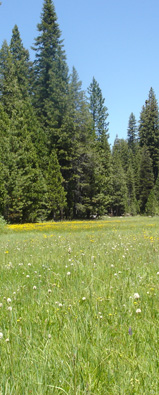
Avery Gilbert's interest in the science of smell goes back to his undergraduate days at the University of California at Berkeley where he did an honors thesis on the ability of Merriam's kangaroo rat to detect the scent of the Western rattlesnake. This involved, among things, driving a sack of rattlers through the Caldecott Tunnel in the trunk of his '67 Chevy Impala.
In graduate school at the University of Pennsylvania, he studied the evolution of social and reproductive behavior in rodents, and  quantified the "one-half rule," which states that a female rodent has twice as many mammaries as the species-typical litter size. His results updated an insight of Aristotle's. At Penn he earned an M.A. in biology and a Ph.D. in psychology.
quantified the "one-half rule," which states that a female rodent has twice as many mammaries as the species-typical litter size. His results updated an insight of Aristotle's. At Penn he earned an M.A. in biology and a Ph.D. in psychology.
Because so much of animal behavior revolves around the sense of smell, Gilbert took a postdoctoral fellowship at the Monell Chemical Senses Center in Philadelphia, a research institute devoted to smell and taste. There he studied inbred strains of mice which selected mates on the basis of genetically determined body odors. This led to his first experiment with human subjects--he asked whether people could distinguish these mousey odors. It turns out they can.
Soon he switched full-time to the study of human odor perception. He explored the olfactory placebo effect (there is one), facial responses to odor (they happen but they are not reflexes), and the so-called "nasal cycle" (airflow alternates irregulary between the nostrils).
At Monell, Gilbert co-authored the National Geographic Smell Survey, a six-sample scratch-and-sniff test sent to all 14 million readers of the magazine. Based on 1.45 million responses, he and his colleagues found differences in smell ability based on age and workplace, and that odor perception changes during pregnancy (download the paper here).
From the faculty at Monell, Gilbert was recruited into the fragrance industry where he set up a sensory research unit at Roure Fragrances shortly before its merger with Givaudan. While there he began a series of studies with Sarah Kemp on olfactory synaesthesia. They found that smells have color, and that the stronger a smell the darker its corresponding color. They also found that smells are associated with sounds. Along with Melissa Crouch, they published a questionnaire that measures the vividness of a person's olfactory mental imagery.
Eventually, Gilbert left Givaudan-Roure Fragrances to start his own firm, Synesthetics, Inc., where he extended his explorations of the visual and tactile associations of smell for the benefit of clients in the perfume business. He later invented and validated the Cranial I QuickSniff ®, a rapid smell test for use by doctors. Gilbert founded the Cranial One Corporation to manufacture and distribute it; he sold the company in 2005. In 2016 he founded Headspace Sensory LLC to explore the science of cannabis aroma and its commercial applications.
Today he continues to participate as a reviewer for scientific journals and as an advisor to research laboratories and startup companies.
